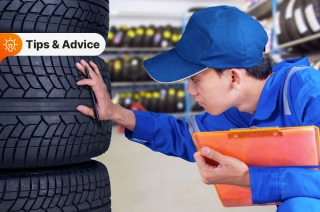
When it comes to the brakes on a car these are some of the most important components of a vehicle that often don’t get enough attention until they begin to fail. For the more car savvy, checking the brake rotors, discs, and even the pads are a routine thing as part of general vehicle maintenance, but the question now arises what about brake fluid?
The role of brake fluid

To start things off, brake fluid plays a very essential role in your vehicle’s hydraulic braking system and is responsible for moving its various components to clamp the pads to the rotor disc. This fluid is designed to work under high temperatures and pressures, which in turn helps slow a vehicle down or stop when the brake pedal is pressed. Brake fluid primarily stays within the brake lines and helps deliver the force created by your push on the brake pedal to each of the brake rotors on the four corners of your car. If the brake fluid is too low, contaminated by moisture, or not flowing properly, your braking power is impeded. This makes your car a potential risk to you and to those around you while driving.
Brake systems degrade over time

As with all mechanical components of a vehicle, the brake system will eventually degrade over time. Components such as rubber lines, valves, calipers, and brake pads will deteriorate as they age and through normal wear and tear. Small bits of rubber from the brake lines could break off and end up in the brake fluid, the fluid itself will also get old and slowly lose its ability to function under high pressures and temperatures. Moisture can also leak into the system and introduce rust and air bubbles, and all of that adds up to a compromised braking system. This could lead to the pedals feeling spongy and the brakes taking a much longer time to slow down the car. It could even end up with the pedal dropping completely to the floor and to complete brake failure.
How often should you change your brake fluid?

The best time to have your brake fluid changed is when your car goes in for its regular preventative maintenance service. If your car is second hand a good rule of thumb to follow is to have the brake fluid replaced every 40,000 kilometers or once (even twice) every 6 months. You can also look at your vehicle’s owner’s manual for further information as to when the brake fluid will need to be replaced.
Another thing you can do is to visually inspect your brake fluid. To do this, locate the brake fluid reservoir that is located above your brake master cylinder. This will typically be found near the firewall of your vehicle close to the driver’s side of the vehicle. If the brake fluid is not clear or transparent, it means that it’s time to have the fluid flushed or replaced. An important thing to remember is that even if the brake fluid is clear, it only has a shelf life of about two years depending on your driving condition, that being said it’s still best to replace it on time as it could affect the effectiveness of your braking system.

If you’re at a mechanic or vehicle service center for a routine service maintenance job, and the service advisor recommends a brake flush after a visual or mileage check, it’s better to be safe than sorry and go for the extra step to maintain your braking system. It’ll be easier to pay for the fluid and labor cost than replacing braking components that can get damaged from bad maintenance habits, or, worse, an accident.
Take note that brake fluid flushing and brake fluid bleeding are completely different things, Brake flushing involves removing all the brake fluid from the system and getting new fluid inside. Brake bleeding just means removing amounts of brake fluid to get air bubbles out of the brake lines. Brake fluid flushing is also something that a certified mechanic or service center should do as the braking system is a critical vehicle component, and leaves no room for error.
Latest Features
-
Tire tread patterns: What they are and why they matter to your car / Tips & Advice
Tire tread patterns aren’t just for looks; they also determine traction, handling, and overall performance on the road.
-
Five things to check on your car before driving during the rainy season / Featured Article
Planning to drive in the rain? Make sure to inspect these five vital parts of your car before hitting the road.
-
What we can expect from the upcoming Mitsubishi Destinator / Featured Article
The Destinator debuts this July 23, and according to Mitsubishi, it’s more than just an XForce with extra seats.
Popular Articles
-
Cheapest cars under P700,000 in the Philippines
Jerome Tresvalles · Sep 02, 2024
-
First car or next car, the Ford EcoSport is a tough package to beat
Jun 18, 2021
-
Car Maintenance checklist and guide – here’s everything you need to know
Earl Lee · Jan 12, 2021
-
Most fuel efficient family cars in the Philippines
Bryan Aaron Rivera · Nov 27, 2020
-
2021 Geely Okavango — Everything you need to know
Joey Deriquito · Nov 19, 2020
-
Family cars in the Philippines with the biggest trunks
Sep 20, 2023
-
Head to head: Toyota Rush vs. Suzuki XL7
Joey Deriquito · Oct 28, 2020
-
Why oil changes are important for your car
Earl Lee · Nov 10, 2020
-
2021 Kia Stonic — What you need to know about it
Joey Deriquito · Oct 16, 2020
-
Top 7 tips for buying a used car in the Philippines
Joey Deriquito · Nov 26, 2020



